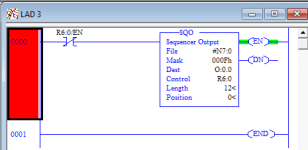geniusintraining
Lifetime Supporting Member + Moderator
Lets keep it real guys, the OP wants some guidance on writing a program with certain criteria, this is turning into a competition of who can write the smallest code and ignoring the OP's dilemma.
Really?
I could not disagree more... the OP was looking for guidance for homework, we collectively provided several options for him to look at, our normal response would of told them to "go pound sand and we dont do homework" but instead we listed several good ways of doing what they need and several ways of 'out of the box' views, not once did we talk about how long the lines are at the store or how AB is so much better than Siemens or how many people are sick from the virus.
AND... hell this is the second time someone said I was correct this year all I need is one more to beat my record and I have 7 months left.
PLCnovice61 said:In GT's example, OP never said what the time frame could be, so he's the winner.
Thank you




